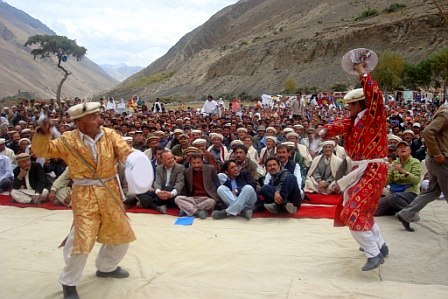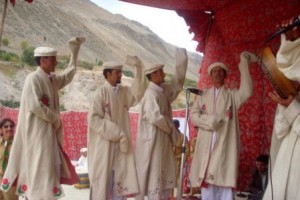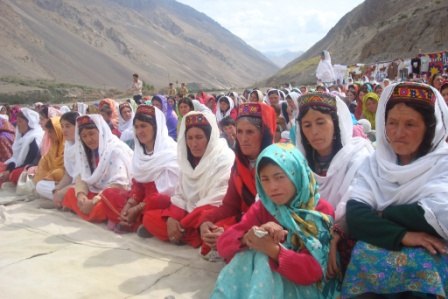Gilgit-Baltistan is home to a number of diversified cultures, ethnic groups, languages and various backgrounds. It is home to people belonging to all regions of Gilgit-Baltistan as well as from other cities of Pakistan and aboard. This multitude of cultures is because of the strategic location of Gilgit. Being the headquarters of the Gilgit-Baltistan as; most of the key offices are located in Gilgit.
Shina is the basic language spoken by most of the original settlers but the new comers have various backgrounds of languages and cultures. Other key languages spoken in Gilgit are:
• Brushaski,
• Wakhi
• Khowar.
• Balti
Urdu and English are the official languages spoke - while other languages include: Pushto and Punjabi. Because of various cultures the pattern of living, housing, food style and over life style has become a mixture having various colors.
People:
Because of the multicultural and multi lingual aspects: people also have a beautiful mix of lifestyles and attitudes. These range from the typical people tending to preserve the traditions and culture to the modern people somehow influenced by other cultures, media and education. That makes a pluralistic society having a range of people with various backgrounds and living together with peace and tranquility.
Religion:
Majority of the inhabitants are Muslims belonging to two different communities of interpretations i.e. Sunnies, Shias and Ismailies. A small number of Christians also reside in Gilgit. For religious practices Sunnies go to Masjid, Shias go to Imam Bara and Ismailies attend Jamat Khana.
Festivities:
There are mainly two types of festivals i.e. religious and cultural. Religious festivals include: Eid-e-Ghadir, Edi-ul Fitr and Eid Miladunnabi (the birth anniversary of Prophet Muhammad-Peace be upon Him). There are some other important events specific to different communities of interpretation which are celebrated with complete peace and fraternity.
Cultural events include:
· Navroz,
· Jashn-e-Baharan
· Cultural festivals.
· Shandoor Polo Festival
· Babusar Polo Festival
· Harvest time festival
These are greatest opportunities for people to get together and share their talents and skills.
Music and Dances:
The famous trio band music is played in this region as in most of the other regions. On the rhythm of this loud music, men love to dance in their typical way. There are some variations in lyrics from region to region.
Dance
The people of Gilgit-Baltistan as have some unique and very beautiful dances in different parts. Following dances are common during the festivals, traditional events and ceremonies
Old Man Dance
In this dance more then one persons wear some old style dresses and dance.
Sword Dance
In this unique dance the participants show taking one sword in right and shield in left. One to six participants as pair can dance.
Cow Boy Dance (Payaloo)
In this dance a person wears old style dress, long leather shoes and a stick in hand.
Traditional Music:
Music (Hareep)
The instruments commonly used in Gilgit-Baltistan of Pakistan are Dadang (drum), Damal and Surnai while some other instruments like Sitar, Gabi(Flute) Rabab and duff represent the different areas. Beside these khiling-boo.chang, porgho-too etc instruments are used in Baltistan region.
Types of Music:
Alghani: The people of Gilgit, Ghizer Yasin, Puniyal, and Gupis call this rhythm as Alghani
Ajoli: during departure of bride and groom from house this rhythm is used in different parts of Gilgit-Baltistan of Pakistan.
Souse: A martial rhythm and it has a fast rhythm and is used specially in sword dances.
Dani: Dani is the name of a traditional music used in Hunza which links to Tibet, Baltistan and Laddakh.
Festival Events:
Harvest Festival:
After many months, the plants are now ready for reaping and harvesting. This stage involves another festival. Harvest time is celebrated. This festival is performed in the same way as the seeding festival. The villagers thank "Allah" for the bounty that they ore going to harvest. For this, it means lively music (drum beats), dancing and eating on top of sharing the happiness with one another.


.jpg)





No comments:
Post a Comment